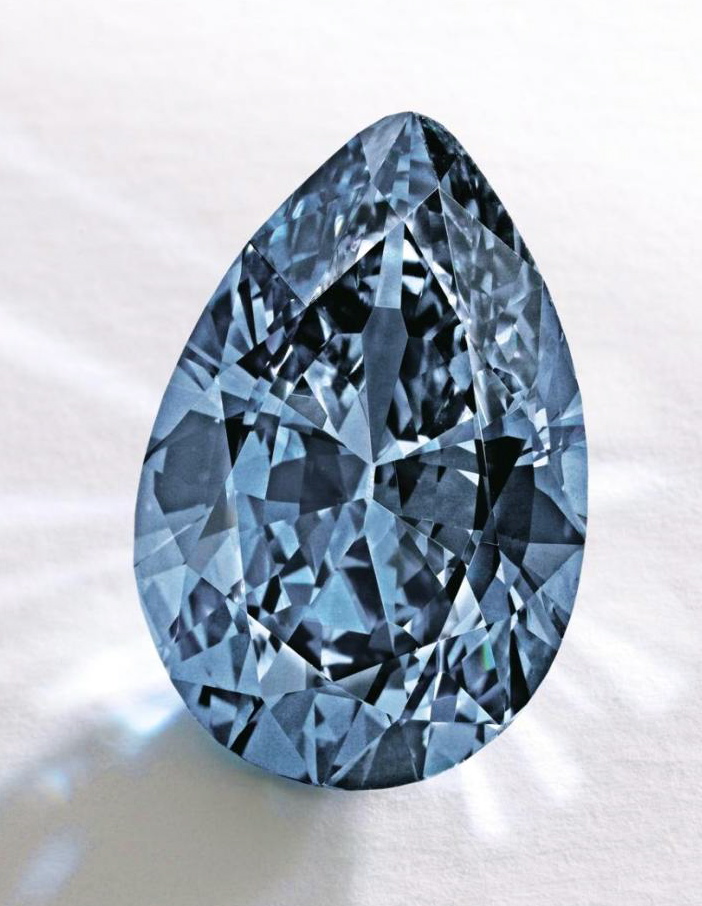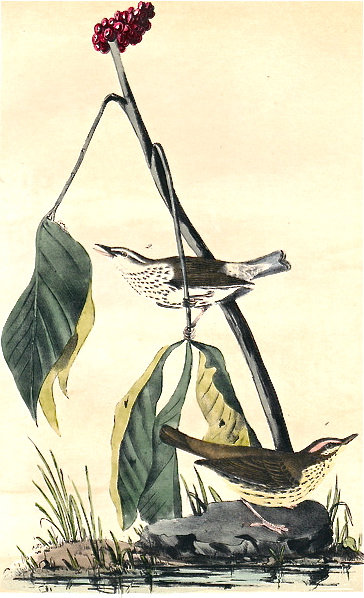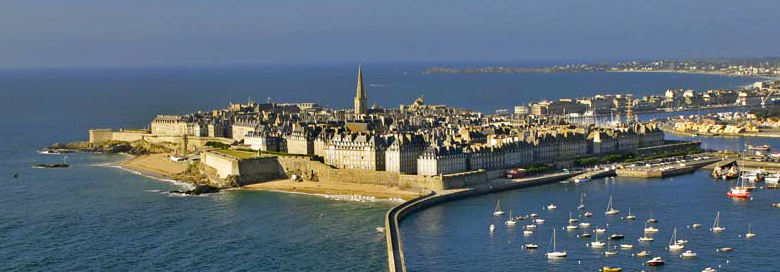Note: Author Anthony Doerr was WINNER of the Pulitzer Prize for Fiction for this novel in 2015. He has also been WINNER of four O.Henry Prizes, three Pushcart Prizes, the Rome Prize and a Guggenheim Fellowship and was shortlisted for the National Book Award for this novel.
“The bony figure of Death rides the streets below, stopping his mount now and then to peer into windows. Horns of fire on his head and smoke leaking from his nostrils and, in his skeletal hand, a list newly charged with addresses. Gazing first at the crew of officers…Then at the glowing rooms of the perfumer Claude Levitte. Then at the dark tall house of Etienne LeBlanc. Pass us by, Horseman. Pass this house by.”—thoughts from Saint-Malo, France, 1942.
 It’s hard to remember when a story as absorbing as this has come along in recent years – and I choose the world “story” deliberately, because it is more personal and involving than words like “novel” or “narrative.” Here, author Anthony Doerr has recreated a whole world, a world of war and love and honor and betrayal, and has told about it in detail, the writing of which took the author himself ten years to complete. It is a lush and glorious story on every level, one that sidles up to you in the first few pages, puts its arm around you a hundred or so pages later, and then ends up holding your heart in its hand. (And if this description seems a bit over-the-top, it’s undoubtedly because I am still totally enraptured by this grand, old-fashioned saga.) Filled with emotion, intense description, life-changing events, and characters one really cares about, the novel straddles that fine line between the romantic and the sentimental in its approach, incorporating the magic of secret locked rooms, a magnificent jewel, and a blind child who loves The Three Musketeers and Twenty-Thousand Leagues Under the Sea, then contrasts them with the horrors of Hitler, his use of children for his own ends, and the institutionalized bullying which marked the rise of the Hitler Youth.
It’s hard to remember when a story as absorbing as this has come along in recent years – and I choose the world “story” deliberately, because it is more personal and involving than words like “novel” or “narrative.” Here, author Anthony Doerr has recreated a whole world, a world of war and love and honor and betrayal, and has told about it in detail, the writing of which took the author himself ten years to complete. It is a lush and glorious story on every level, one that sidles up to you in the first few pages, puts its arm around you a hundred or so pages later, and then ends up holding your heart in its hand. (And if this description seems a bit over-the-top, it’s undoubtedly because I am still totally enraptured by this grand, old-fashioned saga.) Filled with emotion, intense description, life-changing events, and characters one really cares about, the novel straddles that fine line between the romantic and the sentimental in its approach, incorporating the magic of secret locked rooms, a magnificent jewel, and a blind child who loves The Three Musketeers and Twenty-Thousand Leagues Under the Sea, then contrasts them with the horrors of Hitler, his use of children for his own ends, and the institutionalized bullying which marked the rise of the Hitler Youth.
The introduction opens in August, 1944, when the two main characters are both about sixteen, before flashing back to earlier times. Doerr first presents Marie-Laure, a blind girl living in the old house belonging to her great-uncle Etienne in Saint-Malo, France, “the last citadel on the edge of the continent.” It is two months after D-Day, and leaflets are falling, urging the citizens to leave for open country before the Allied bombing takes place in earnest. Marie-Laure hears the bombers in the mounting static on the radio, “The hum inside a seashell.” Three streets away, German private Werner Pfennig, an orphan who was drafted into the Hitler Youth seven years before, is hiding in a destroyed hotel. He and his mates, about the same age as Marie-Laure, have erected and barricaded an antiaircraft gun there, “the royal acht-acht, a deathly monarch meant to protect them all.”

This 9.75 carat blue diamond, once belonging to Bunny Mellon, was sold on Nov. 21, 2014, at Sothebys for $32.6 million. The Sea of Flame, in this novel, is fourteen times larger!
Book One then flashes back to 1934. Marie-Laure LeBlanc, six years old, is living in Paris with her father, who works in the Museum of Natural History. As the Keeper of the Locks, in charge of protecting all the valuables in the museum, her father is particularly invested in protecting the Sea of Flame, an enormous 133-carat blue diamond, the largest such diamond in the world, a “cursed stone” which will protect the life of anyone who keeps it, allowing him/her to live forever, but, at the same time, will bring misfortune to those friends and family whom the keeper loves. The only way the curse may be lifted is if the keeper throws the jewel into the sea. Though Marie-Laure had vision when she was born, she became completely blind one month after her father set up a series of locked rooms which would allow the stone to be confined within the museum – thirteen separate doors to thirteen separate spaces, each of which requires thirteen separate steps to unlock the door (described in this book of thirteen chapters.). Her father, wanting her to be able to navigate both the museum and the neighborhood, creates a detailed, wooden miniature of Paris, which Marie-Laure studies with her hands so that she can learn to navigate the real environment in which she lives. Within two years, her father is able to leave her anywhere in the city, and she can lead him home.

Hitler meets with young recruits, many of whom are not yet in their teens, but who have sworn allegiance to him and are being trained to fight.
Also in 1934, a young German boy, Werner Pfennig, is living in an orphanage in the coal country of Zollverein, Germany, where he is growing up with his younger sister Jutta. Having nothing in their lives outside the orphanage, the two form a close bond, and when Jutta finds some copper wire, she gives it to the clever Werner who is able to use it to make a radio from discarded parts. This enables them to hear broadcasts coming from France, especially science stories and lessons, and provides exciting possibilities and insights which enable them to live with the hope that they will someday be able to avoid their seemingly predestined fates of working in the coal mines which killed their father. A few years after that, Werner is drafted into the Hitler Youth.

Frederick, one of Werner’s friends in the Hitler Youth, is fascinated by birds, and this Audubon plate of the Aquatic Wood Wagtail, a favorite bird, plays a role in the later portions of the book.
Doerr does a masterful job of alternating time frames to keep the reader informed about the backgrounds of the characters, even as the action is moving forward. By toggling back and forth among time periods, he draws out the suspense regarding the separate stories of Marie-Laure and Werner and the events which will eventually conclude the action. Though the reader sees Marie-Laure and Werner at critical points in their lives and is able to identify with both of them, the author also omits crucial information to prolong the suspense. A large cast of well-drawn peripheral characters broadens the scope of the novel, providing insights into the tenuous hold that the residents of Saint-Malo have on their lives, at the same time that scenes involving Werner and other members of the German army show how tenuous is their own hold on reality. As the time frame changes back and forth between 1934 and May, 1944, and all dates in between, the reader becomes totally engaged, rooting for the sympathetic characters and hoping for the best, as the blue diamond, the Sea of Flame, haunts the action and connects the subplots.

Some characters in Saint-Malo are actively involved in the Free French movement, determined to undermine their German occupiers.
Important themes of love vs. war, human connection vs. inhuman dedication to an imposed goal, reality vs. the power of imagination, and time and light and their interrelationships, infuse all aspects of the novel, even though most of the action is revealed through the lives and points of view of two children/young adults. Those who may be thinking that there is little new that the author could possible say about World War II and the connections between Vichy France and the Germans should think again. Doerr is a huge talent with a broad vision of this war and the civilian lives which it absorbed and destroyed, and his ability to convey his ideas through his characters is stunning. High on my list of Favorites for the Year – exciting, involving, and winningly presented.

The walled city of Saint-Malo, surrounded by water on all sides, was established during the Middle Ages, and was one of the last places in France to be liberated from German occupation.
Photos, in order: The author’s photo appears on his website: http://www.anthonydoerr.com/
A 9.75 ct. blue diamond belonging to Bunny Mellon, was sold at Sothebys on Nov. 21, 2014, for $32.6 million. The Sea of Flame, the 133.6 carat blue diamond in this novel, is fourteen times larger. http://www.forbes.com/
Hitler chatting with the Hitler Youth who have pledged to support him. http://da.3ctysklandnazismeogholocaust.wikia.com/
Werner’s friend Frederick, “a reedy boy, thin as a blade of grass,” was fascinated by the birds around their camp. One of his favorite birds was the Aquatic Wood Wagtail, as seen in the Audubon book he enjoyed so much at home. Plate 149. http://www.letour.fr/
The flag of the Free French is shown here. Originally the symbol of Joan of Arc, it was adopted by Charles de Gaulle from 1940 – 1945. http://www.oradour.info/appendix/frefranc.htm
The walled city of Saint-Malo, founded during the Middle Ages, is surrounded by water on all four sides. http://www.letour.fr

